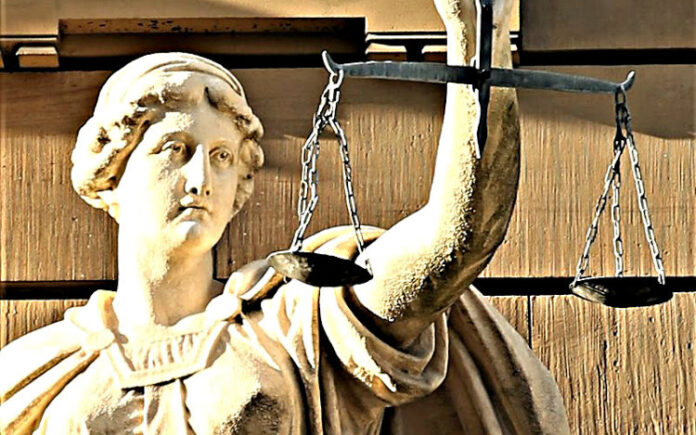In the realm of contemporary Spanish legal philosophy, there is a scarcity of scholars who, like Manolo Atienza and myself, have delved into the cognitive status of legal doctrines.
I am referring to reflections primarily focused on the question of whether legal doctrine is or isn’t a science, and in what sense. I exclude the vast literature dedicated to natural law, legal positivism, legal realism, or their respective authors. Instead, my focus is on metatheoretical descriptive studies of legal doctrine. I won’t delve into the philosophical-legal studies conducted by jurists such as Hernández Gil, Enrique Gimbernat, Alejandro Nieto, or Jesús Delgado, nor the historical legal studies by scholars like Sánchez-Arcilla. The studies I refer to are essentially metatheoretical explorations of descriptive legal doctrine, different in nature from the prevalent prescriptive or critical metatheoretical studies.
Beyond the pioneering work of Albert Calsamiglia, whose book, with an eccentric title, was published in 1986, I became involved in a lively debate initiated by Manolo and Roberto Vernengo in the same year. My contribution to this debate, written in 2003, has gained some traction since its republication in subsequent compilations in Spain, Argentina, and Mexico.
Calsamiglia’s book, “Introduction to Legal Science,” did not entirely align with its chapters, which addressed methodological issues in the philosophy of science and the scientific status, characterization, rules of the game, and social functions of legal doctrine. Nevertheless, the formal discrepancies did not diminish the substantive value of Calsamiglia’s studies, which significantly contributed to updating the landscape of Spanish legal philosophy.
Around 2017, Manolo Atienza revisited some ideas from my 2003 article and, based on a central agreement, made some moderately controversial observations. This tribute book seems an opportune moment to revisit the fundamental elements of previous studies and continue a dialogue that, on other occasions and topics, has generally tended to bring us together rather than apart in our (always limited) different positions.
About five years ago, I had the opportunity to revisit the topic of legal doctrine. Invited by a mathematician to participate in an interdisciplinary doctoral course introductory session dedicated to the concept of theory, I, alongside a physicist, two linguists, and a mathematician, had twenty minutes to explain what a legal theory is. The session highlighted the significant differences between these disciplines and, within them, the vast distance and heterogeneity between legal theories and hypotheses in physics, mathematical theorems, and theories on language. It underscored the peculiarity of discussing “legal science” in that context. Without attempting to summarize the variety of perspectives presented, I will recall what I proposed regarding legal theories.
I suggested distinguishing three levels of legal theorization: low, medium, and high scope. The low-scope theories can be related to sets of rules and institutions that constitute the invention of law. This type of “theories” has not ceased to exist in contemporary times, exemplified by doctrines like the abuse of right or the crime of genocide.
Medium-scope theories involve the systematic conceptualization of law, which saw significant development in the 19th century, especially influenced by German pandectism. Notable examples include German criminal dogmatics, which categorizes the offense as a “typical, unlawful, and culpable action,” influencing many criminal codes and judicial interpretations.
The highest level comprises theories of broad scope, housing general conceptions about the concept and justification of the legal order itself. The contrast between natural law and legal positivism, existing in various forms since the 19th century, persists. The legal realisms, emphasizing the social dimension of law and proposing empirical and predictive knowledge of legal norms, have also been relevant since the late 19th and early 20th centuries.
Can such “theories” be considered scientific in any sense? With a few clarifications that I will make later, I maintain the metatheoretical position expressed in my 2003 article: legal doctrine cannot be considered an empirical or descriptive-explanatory science. Attempts to place it within a historicist or hermeneutic model, despite sharing an object, fail due to essential differences in method and purpose. These differences become evident when considering the distinct sense of the notion of “interpretation” in the social sciences, including law, compared to the interpretation in the context of law. Legal interpretation aims to propose the most appropriate meaning of a norm or social practice in terms of reasons rather than causes.
The legal-dogmatic method is idiosyncratic, involving the systematic reworking of legal material. In its minimally complex forms, it includes the selection and glossing of normative material, the classification or systematization of basic concepts, and the analysis and qualification of legal figures or institutions to establish their meaning. This theoretical method, inevitably affecting practice (legislation and application of the law), is clearly distinct from history, sociology, economics, social psychology, linguistics, etc., as it is a type of knowledge that is normative, not factual.
That legal doctrine is normative knowledge doesn’t only mean it studies norms; it means these norms are studied not as facts but as expressions of what ought to be. Thus, the interpretative nature of legal doctrine takes on a normative or evaluative purpose. Therefore, its results are not “scientific” in the sense that they don’t predict, explain, or describe their object of study, nor do they pretend to. This normative character is present in all three moments of interpretation: before legal-dogmatic work, where the law is assumed as a normative object, during interpretation, which reworks legal material using evaluative parameters, and after dogmatic work, which serves didactic, integrative, and legal policy functions.
In conclusion, legal doctrine, in my view, should be considered not a science but a technique—a type of knowledge that, echoing Celso’s classical definition of law as “ars boni et aequi,” has both a purpose and practical utility. It’s essential to avoid discrediting legal doctrine’s characterization as a technique due to misunderstandings about the association of science with social utility. Additionally, reducing all knowledge to scientific knowledge overlooks the fact that technical knowledge can be immensely useful. Legal doctrine is ambiguous and bifrontal—it relies on historical, sociological, economic knowledge, as well as the more intuitive techniques of legal interpretation.
Returning to the debate with Manolo Atienza, which I initiated in 2003, his characterization of legal doctrine as a technique rather than a science aligns with my essential agreement. The debate revolved around whether legal doctrine should open itself to other scientific fields to transition from being a mere technique to becoming a technology, employing scientific knowledge. In this context, Atienza criticized legal doctrine, asserting that it maintains few, and shallow, connections with science. I agreed with Atienza’s characterization of legal doctrine as a technique but disagreed with his absolute denial of its technological aspects. In my view, good legal doctrine relies on historical, sociological, economic knowledge, and contributes both scientifically informed and more intuitive techniques. This viewpoint has been a consistent theme in my writings, recognizing the bifrontal nature of legal doctrine.
Manolo’s response to my clarification came in 2017 in a chapter titled “Legal Doctrine as Tecno-Praxis.” He expressed surprise at my criticism of his characterization of legal doctrine as a mere compilation of “


